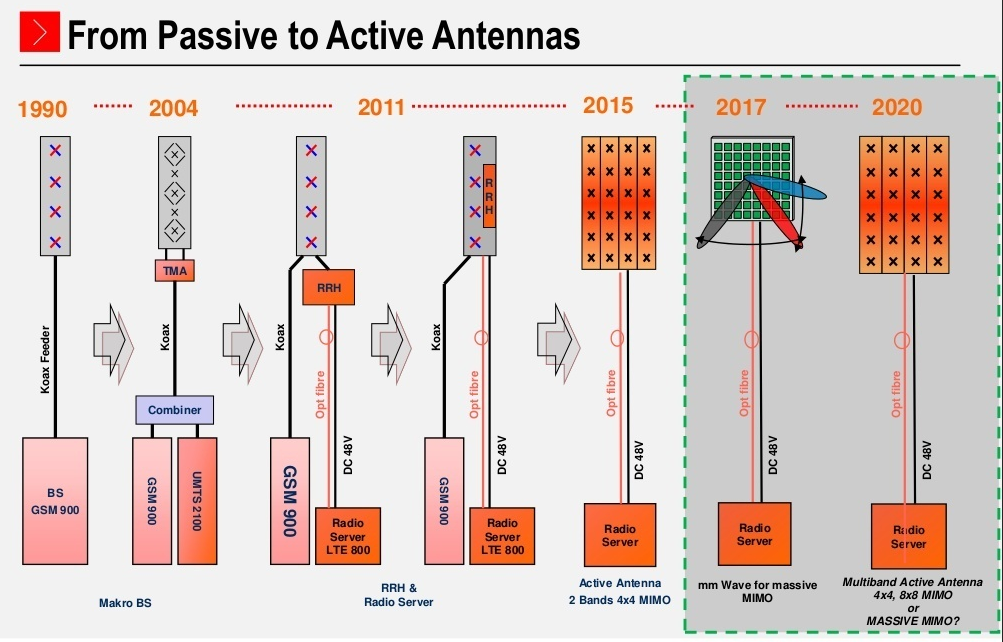5G Antennas
MIMO or “Multiple-Input Multiple-Output” allows more signals to be sent and received at any given moment. This is implemented by installing more antennas as an array in a small cell. The problem of having so many antennas installed is addressed by beam forming. With MIMO, a base station can send and receive more signals to boost the capacity of a 5G network by a factor of 22, first reported by engineers at the University of Bristol and Sweden’s Lund University.
Main classes of services for 5G TV
| Classes | Original source | Descriptions |
|---|---|---|
| Enhanced Mobile Broadband (eMBB) | 3GPP | Access to multimedia content, services and data by humans |
| Massive Machine Type Communications (mMTC) | 3GPP | Data exchange among low-power devices with minimal throughput and relaxed constraints in terms of delay |
| Ultra-reliable Low Latency Communications (URLLC) | 3GPP | Connectivity with strict levels of availability and latency (autonomous vehicles, public safety, industrial control, robotics and drones, remote medical surgery) |
| Evolved MBMS(Multmedia Broadcast Multicast Service) | extension of the 4G LTE system | Operator can decide to allocate a part of the bandwidth available in downlink in a cell (up to 60%) to broadcast traffic that will serve multiple devices with the same content: video, audio, files, etc. Content delivery is based on MPEG-DASH adaptive streaming but with a single representation or quality level per content. |
Technical approaches in 5G Platform
| Classes | Descriptions |
|---|---|
| Network Slicing | Designed to be tuned and dynamically configured in multiple logically partitioned networks with different characteristics and customized QoS levels |
| Fixed wireless access | eMBB enables to distribute high quality content to mobile devices/connected TV/set top boxes in homes with high spectrum efficiency just like traditional TV broadcast terrestrial delivery (currently using DVB-T/T2, ATSC or ISDB-T technologies) |
